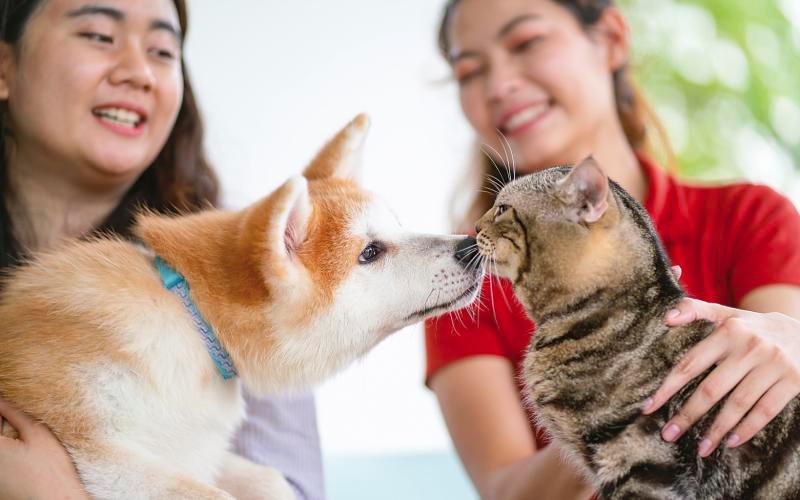CATS and dogs have strong nonverbal communication skills. They may communicate a mood without saying anything, from calm and satisfied to furious and worried. Understanding and responding effectively requires the ability to interpret their expressions.
Pets intuitively use a mix of posture, tail position, eyes, ears, and facial expressions to communicate. Although dogs and cats frequently express emotion in similar ways, there are species-specific distinctions.
Watch your pet's body language and compare it to these common behaviour to check if your dog or cat is talking with you.
-> Dogs
Happy
When the ears are in a natural posture and the mouth is relaxed or slightly open, rapid tail wagging from side to side or in circles is a definite indicator of canine excitement. Some dogs look to be smiling.
Alert
The gaze is fierce and fixed. Head and neck are upright or slightly tilted, and ears perk up and slant forward. The dog's posture is straight, with weight distributed evenly on all fours. The tail is stiff and motionless.
Excited
As a dog prepares for action, the weight moves to the back legs. In anticipation, the ears are raised, the tail is held high, and the mouth is slightly open.
Friendly
A friendly dog may glance up at you, possibly jumping up on you or bringing you one of its toys.
Playful
A dog who wants to play may first extend into a bow to let you know he's ready to have some fun. Or he may nuzzle or paw at you and then flee in the hopes that you would chase after him.
Afraid
When dogs are scared, they appear to crouch and shrink in size. They take a step back. Their ears flatten out, and their tails drop low or fall between their legs.
Submissive
Submissive dogs attempt to appear smaller than they are by walking close to the ground. They keep their tails tucked low or between their knees and avoid staring another dog or human in the eyes.
Dominant
A dominating dog, standing tall and big, tilts its body forward. Her tail is up, her ears are upright, and she stares unblinkingly at other dogs or people.
Aggressive
Dogs that are hostile or combative should be avoided. They usually gaze at a person or animal without blinking. With weight moved forward, the posture is frightening. The tail is held high. Teeth are exposed. Low, threatening growls or barks may be heard from the dog. When feasible, avoid – and do not confront by gazing back.
-> Cats
Happy
Closed or half-closed eyes, ears tilted forward, and a tail up or languidly flexing all indicate a comfortable cat. His fur will be flat, and he may start purring, stretching out, rolling over, or kneading with his front paws.
Alert
Wide open eyes. Ears tilted forward slightly.
Friendly
Slow blinks imply affection and happiness.
Playful
A cat with wide ears and a tail curled upward indicates that it is ready to play.
Afraid
Fearful cats tuck their tails between their legs, turn their ears backward, and their pupils dilate. He wants to be anywhere but there and may flee to find safety.
Submissive
Crouches, shrinks, and flattened ears
Tensed up
Pupils narrow, and the tail rises up, vibrating almost imperceptibly.
Angry
The ear flattens and points upward, the eyes narrow, the whiskers point forward, and the tail begins to thrash. The back arches, the fur stands on edge, and the claws expand. Take a step back!
Defensive
Pupils contract, tail twitches, and the cat responds to perceived threat by growing, snarling, hissing, or spitting.













